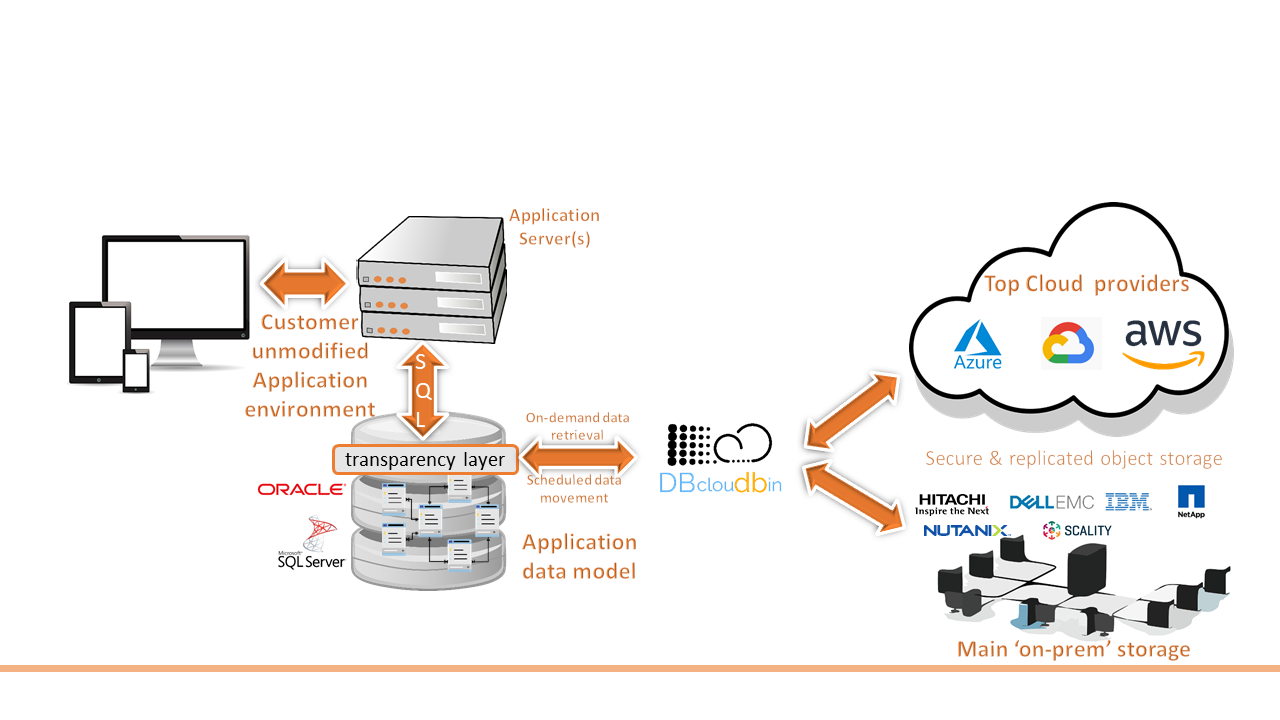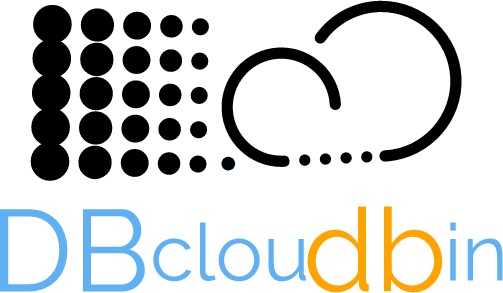DBcloudbin enables the movement of database content into a specialized object store repository (large scalability, low cost) with transparency for the application. The solution enables this by creating a ‘transparency layer’ at the database, where the application keeps working as usual (through the existing SQL interface) and DBcloudbin handles the required links from content transferred into the external object store, maintaining full access to the migrated elements.
This is the high-level technical architecture:

Figure 1 DBcloudbin technical architecture overview
In this scenario our customers have an enterprise application, potentially with a series of application servers and an enterprise database. The application uses this database to store application data in a transactionally consistent way. Part of this data is non-relational data (documents, pictures, …).
Installing DBcloudbin using the wizard-based installer will allow to create a web-service interface (the DBcloudbin agent) from the database and a large list of potential object stores (both on-premises through one of our technology partners or in the most important Cloud providers, including a DBcloudbin built-in service). The installer will automatically create the transparency layer based on the application data model in order to allow communication from the DB with the agent and generate a mapping catalog where the object-id (the identifier to locate the content in the object store) can be safely stored. In order to move the content to the Cloud (to reduce database size) or back to the database (e.g. for uninstalling DBcloudbin or any other reason) a command line interface (CLI) is provided, with simple commands where we can define the business rules for the content we would like to move (e.g. documents older than 1 month); the CLI execution can be easily scheduled through any of the existing task schedulers in the market.
